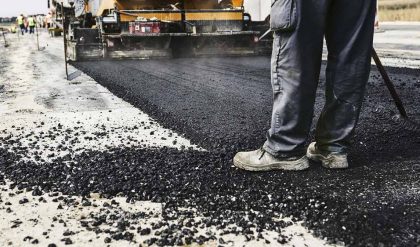Upstream, midstream, and downstream petroleum production processes
For petroleum production, the upstream process is the exploration and production phase, which includes searching for potential underground or underwater crude oil and natural gas fields, drilling exploratory wells, and bringing the natural gas and crude oil from the well to the surface.
The midstream process involves the transportation (by pipeline, rail, barge, oil tanker, or truck), storage, and wholesale marketing of crude or refined petroleum products. Pipelines and other transport systems can be used to move crude oil from production sites to refineries and deliver the various refined products to downstream distributors.
The downstream process refers to the refining petroleum crude oil, and processing and purifying raw natural gas. These products are divided into:
· Light distillates LPG C3-C4, gasoline C3-C12, naphtha C6-14
· Middle distillates, kerosene, diesel C9-C16, jet fuel C9-C17
· Heavy distillates, lubricating oil C20+
Crude oil composition and fractionation

Crude oil is a complex mixture of hydrocarbons, non-hydrocarbon organic compounds containing N, S, O, and organometallic (e.g., Ni, Fe, and V) compounds. The refinery process distills the crude oil mixture into different fractions and makes the final products for industrial uses of various purposes.
| Distillation fractions | End products |
| Gasoline vapors, LPG | LPG |
| Naphtha | Gasoline |
| Kerosene | Jet fuel |
| Diesel distillate | Diesel fuel |
| Medium weight gas oil | LPG gasoline |
| Heavy gas oil | Motor gasoline, jet fuel, diesel fuel |
| Residuum | Industrial fuels, asphalt base |
Analysis of crude oil fractions
Different crude oil fractions, petroleum feedstock, and finished products need different analytical tools and methods for analysis.
Saturated fractions can often be analyzed by a stand-alone gas chromatography (GC) with conventional detectors. These GC systems are limited to analyzing hydrocarbons with carbon numbers less than 35 because its lower temperature limit is about 325°C. Analysis of heavier hydrocarbons requires high temperature GC.
The aromatics fraction is hard to analyze by stand-alone GC, but can be analyzed using GC-MS because of its highly sensitive and selective detector. Heavier-cut petrochemical products such as resins and asphaltenes have higher boiling points and can be analyzed by LC-MS. These heavier-cut petrochemical products are not easily analyzed by GC because GC cannot volatize the high boiling point components.
Analysis of fuel additives using simplified ASTM 3606
Adding certain additives to fuels can prevent or remedy fuel delivery system problems. The function of the fuel additives include, but are not limited to:
· Stabilizing gasoline
· Boosting octane
· Preventing fuel line freezing
· Lubricating upper cylinder
· Cleaning fuel injectors
As an example, benzene and toluene are gasoline additives that are analyzed by GC as described in ASTM D3606. The method is for analysis of benzene between 0.1 to 5% and toluene between 2 to 20%. The original method uses a packed GC column and thermal conductivity detector (TCD), but the method can be simplified using a capillary column with flame ionization detector (FID) for automated analysis of the two compounds.


Comments are closed.